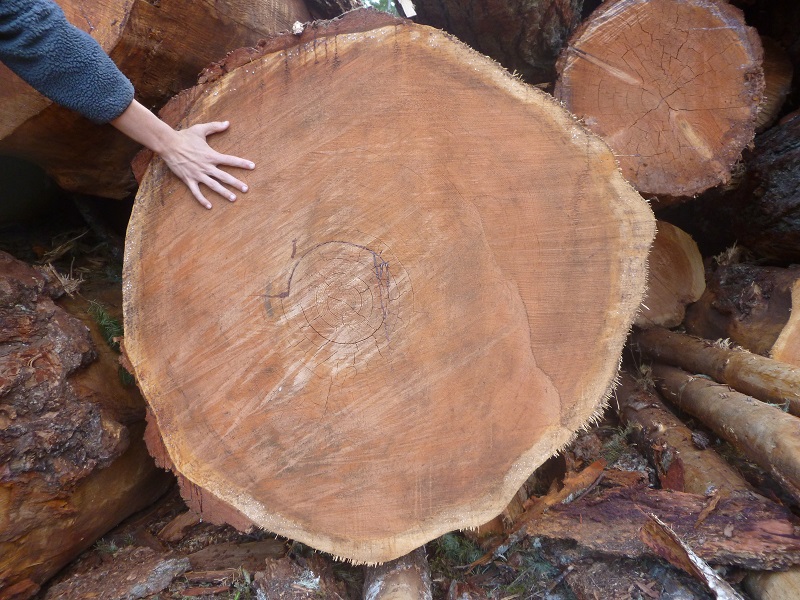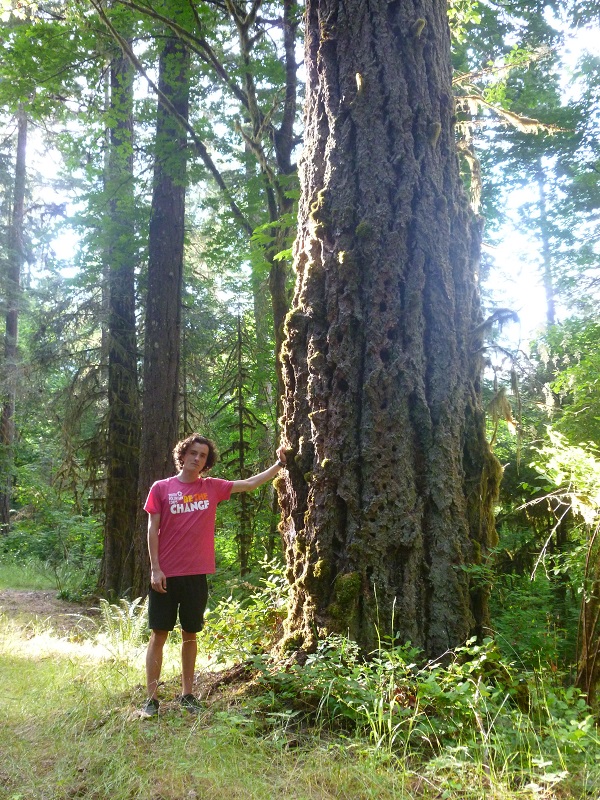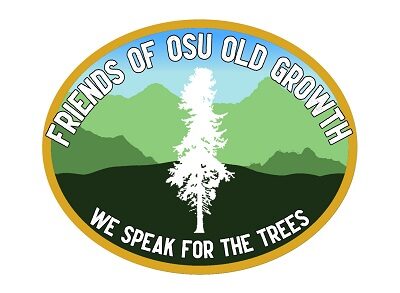Even most people who appreciate the grandeur of old trees probably assume that the logs from these trees are worth a lot of money – WRONG! A typical old-growth log (like the 420-year old one recently harvested at OSU’s Baker Creek stand) will only sell for $500 to $700 at the mill. I think most people would find this astounding, if not profoundly disturbing! It’s NOT about the logs, but rather removing them from the forest so OSU can put the land back into timber production. To see learn more and see how the numbers stack up, read on…

First, a little background on the history of logging in this country. When the historic and comprehensive Northwest Forest Plan was put together in 1994, we saw a fundamental shift in logging practices and timber production. For the first time in our history, the government implemented an innovative approach based on ecosystem and watershed management (concerns about the northern spotted owl were really just the catalyst for change precipitated by the destruction of old-growth forests).
After hundreds of years of cutting our forests with little focus on impacts to the ecosystems, there simply wasn’t very much Old Growth left. Even today, most people do not realize that virtually all of the Old Growth on private lands was cut long ago. For much of the 80’s and 90’s, the debate was really about how much more of our (public) old-growth forests private timber companies should be allowed to cut.
With the decline of Old Growth cutting (both due to the NW Forest Plan and the dwindling supply), lumber mills in the Pacific Northwest were forced to retool their operations to handle smaller logs. Changes over the course of the past couple decades have been revolutionary. Mills now use computer-controlled machines to convert much smaller logs to lumber at a speed that is hard for the eyes to even follow. The net result of all the changes is that most mills in Oregon can only handle logs 24″ and smaller at the butt (big end). Bigger logs just don’t fit through their machinery, so they have to be culled out and sent to one of a handful of special mills.
In the mid-Willamette Valley today, only three lumber mills can even handle large, old-growth logs (and only one mill, Hull-Oakes, can saw the largest ones). The underlying economics (e.g. limited production capacity, specialized machinery, small markets) translate into lower prices for the over-sized logs. Logs are graded (and payments made) based on quality. A big, burly log with lots of knots and defects (like the 420-year old one cut at OSU’s Baker Creek) would fall at the low end of the pricing (a “4-saw” log in mill lingo). Prices for these kinds of big, low-quality logs are currently running around $200 to $300 per “thousand” (board feet of lumber). The lowest quality logs just end up being chipped and pulped to make paper and other products. On the other end of the pricing spectrum, a large log that has few visible defects (a “2-saw” log) would yield somewhere around $600 per thousand (board feet of lumber).
In order to get the price paid for a typical old-growth log we first need to calculate how many thousands of board feet of lumber would be contained in the log. To do this, we use what’s called a “lumber scale” – an estimating table or calculator that converts log size to lumber volume. There are various scales in use, but the “International 1/4-inch Log Rule” is a common one. Using the example of the 420-year old log from OSU’s Baker Creek, the International Scale tells us it would contain approx. 2,400 board feet of lumber. At $200-300 per thousand (board feet of lumber), the log would be worth roughly $500 – $700 at the mill.
Taking away the cost of logging and hauling (typically $100 per thousand), we’re left with a net profit of roughly $240 to $480 for a 30-foot section of this 420-year old log. If we make the gross assumption that this big, gnarly tree yielded three identical logs of this quality (obviously not the case, as logs get smaller and quality goes down going up the trunk), we end up with $720 to $1,440 of net profit from this (420-year) old-growth tree.
When I presented the rough outlines of this analysis to a forestry expert, he explained that the economics have little to do with the (low) value of the old-growth logs. Rather, it’s all about maximizing production of timber from the land occupied by the old-growth tree. When OSU cuts an old-growth tree, they can plant 6-8 trees in its place. These trees will be grown for roughly 40 years and harvested. It would be interesting to know just how much OSU will profit from harvesting these 6 to 8, 40-year old trees. My guess is not all that much.

